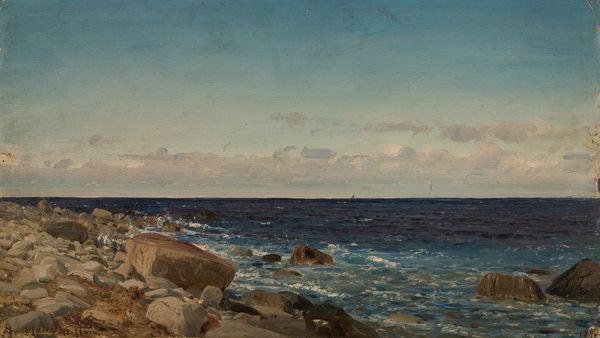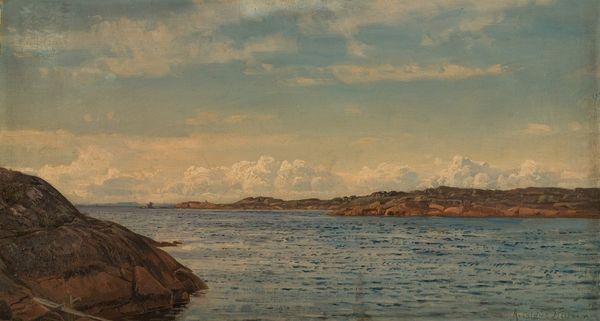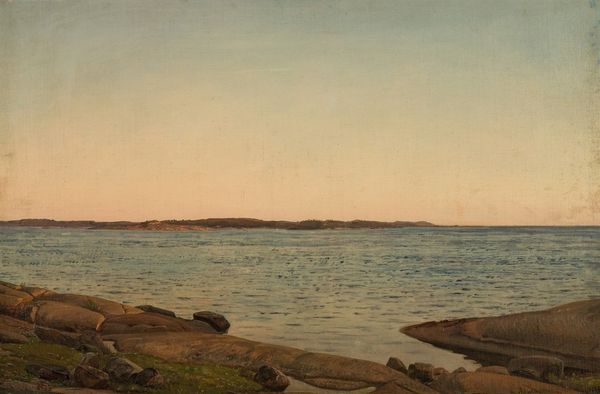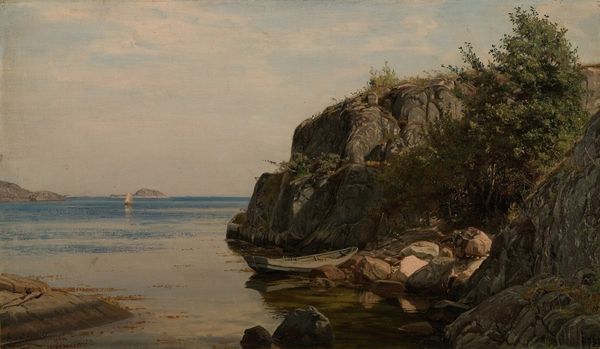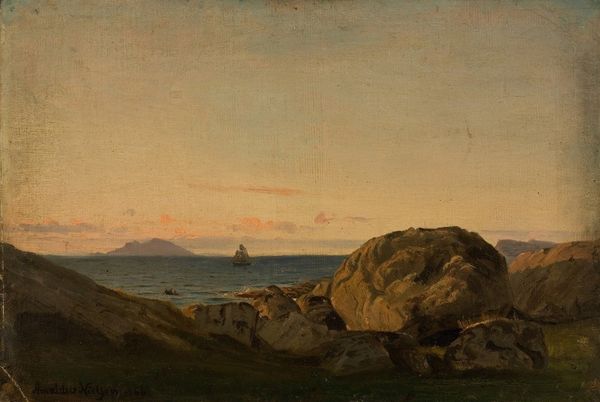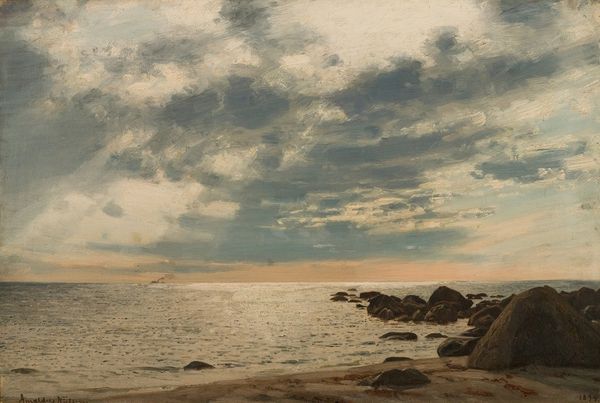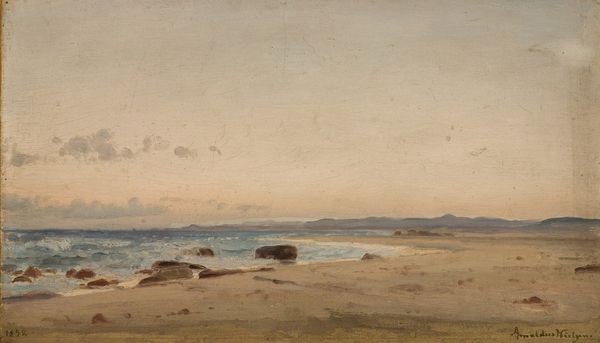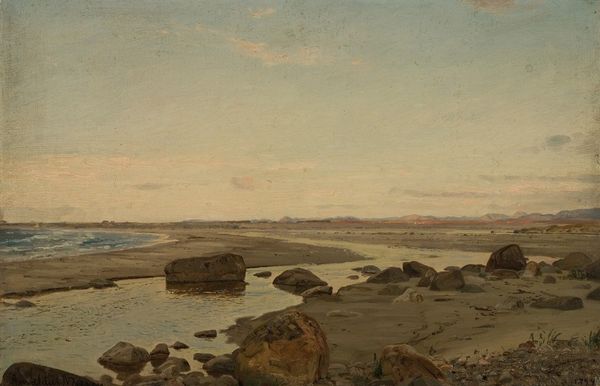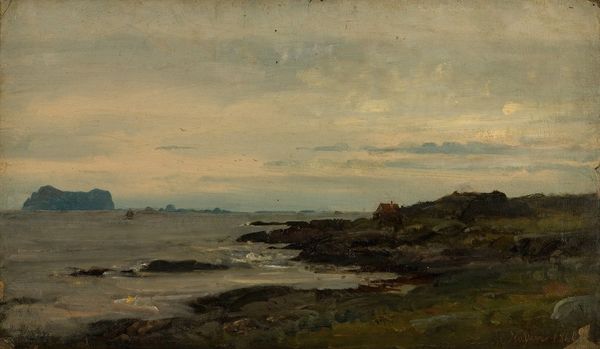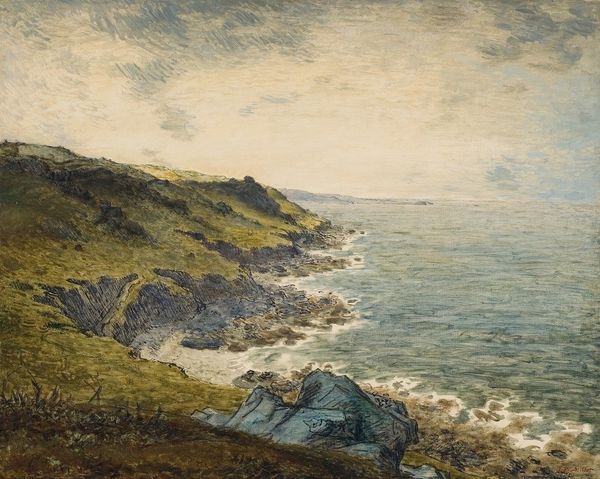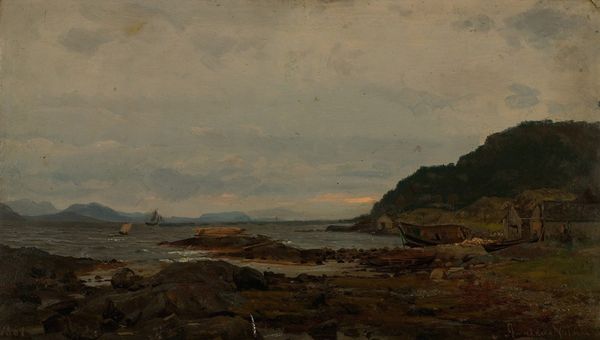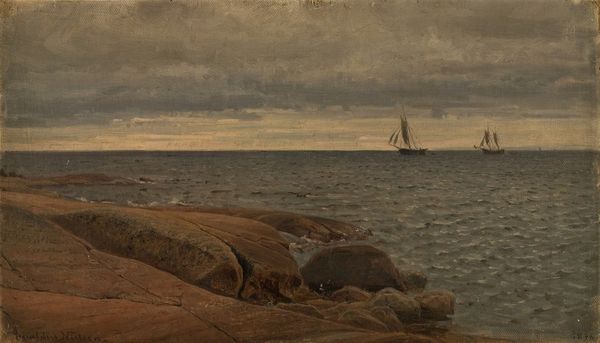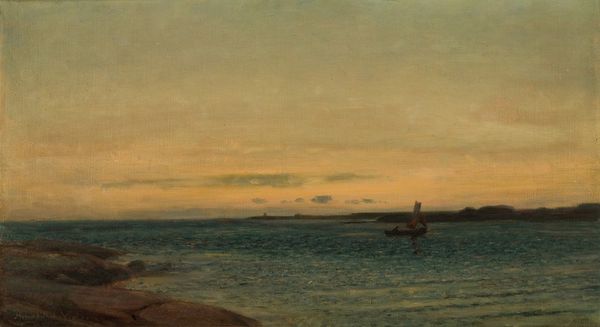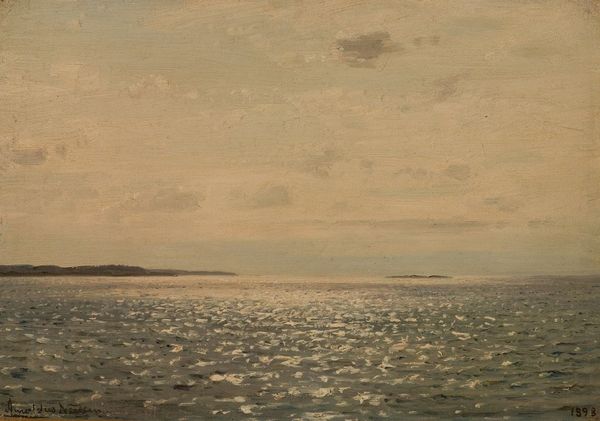
Copyright: Public Domain: Artvee
Art Historian:Editor: Editor: So, this is "Skjærgård, Gamle Hellesund" by Amaldus Nielsen, painted in 1895. It's an oil painting of a coastal scene. I'm really struck by the texture of the rocks; you can almost feel the roughness. What's your take on it? Art Historian: What intrigues me immediately is Nielsen’s dedication to capturing this specific place at a specific moment, en plein air. Can you imagine the logistics in 1895 of transporting the materials—canvas, paints, easel—to this rocky outcrop? Think about the labour involved not just in painting but also in accessing this view. Editor: That’s a great point! I hadn't considered the physical effort. Does that change how you see the painting? Art Historian: Absolutely! Knowing it was painted on site informs everything. It moves beyond a purely aesthetic experience and prompts us to consider Nielsen’s engagement with the landscape itself and the realities of working within it. How do you see the materials contributing to its overall effect? Editor: The way the paint is applied...it looks quite thick in places. Did that have something to do with him painting outside, maybe needing to work faster? Art Historian: Precisely! The materiality reveals his process, forcing him to make choices driven by circumstance. Furthermore, who was his target audience and how might the depiction of landscape impact that audience, given industrial advancements? Editor: I guess thinking about the work in this way does give the painting a different meaning than just scenery; you notice what went into making the landscape as an image as much as the landscape itself. Art Historian: Indeed. I hope to find similar context in future works.
Comments
No comments
Be the first to comment and join the conversation on the ultimate creative platform.
